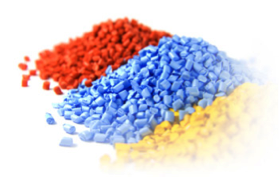In the realm of material science, the advent of plastic extrusion technology has drastically changed the way manufacturers approach design and production. An extrusion process is a method by which raw plastic materials are transformed into a continuous profile, creating a multitude of custom plastic profiles. This technology, while often compared to traditional metal or wood fabrication, has its unique merits and potential advantages in terms of strength, durability, and even cost-effectiveness.
Central to the plastic extrusion process is the extruder – a machinery marvel that breathes life into raw plastic. The heart of the extruder is the single screw extruder or twin screw extruder, which play a crucial role in turning the raw plastic material into a molten plastic state. The raw material, which could range from thermoplastic elastomer, rigid PVC, polyethylene, high impact polystyrene, or even a flexible PVC, is then pushed through an extrusion die by the screw. This gives birth to the extruded plastic profile.
Depending on the required outcome, different types of extrusion machines are used. For example, the Davis Standard extruder is well-known for its reliability and high-quality outputs. Whether you’re looking to manufacture plastic tubing, wire insulation, or a plastic film, the Davis Standard is often the go-to choice. Meanwhile, if the requirement is for manufacturing plastic products with complex profiles, a custom plastic extrusion line might be deployed.
Extrusion operations are highly versatile. The extrusion die and breaker plate can be tailored according to the required profile. Also, the addition of a vacuum during the process ensures the precise formation of the desired profile. The nature of the process allows for flexibility, enabling manufacturers to create custom plastic profiles tailored to a variety of applications.
Now, let’s contrast this with traditional metal or wood manufacturing. While it’s true that some metals and wood types may inherently offer greater mechanical strength, plastic profiles, when designed and produced correctly, can offer comparable performance.
A key advantage of the plastic material lies in its versatility and flexibility. Thermoplastic material, in particular, offers excellent resilience and can withstand considerable pressure without failing. Moreover, plastic profiles can be manufactured with precision to meet exact specifications, ensuring a perfect fit every time. This precision is not always achievable with wood or metal, given the nature of these materials.
The durability of plastic profiles is also remarkable. Unlike wood, plastics don’t rot or degrade due to biological processes. They are also immune to rust and corrosion, unlike metals. For example, a thermoplastic elastomer or rigid PVC can maintain its structural integrity for years, even under challenging environmental conditions.
From an economic perspective, the extrusion process is also highly efficient, often resulting in less waste than metal or wood manufacturing. This efficiency can lead to cost savings in the long term, which can be a game-changer for businesses.
Of course, quality assurance plays a crucial role in all manufacturing processes. Within the realm of plastic extrusion, strict quality checks are applied at every stage, from the inspection of raw plastic material to the final extrusion operations. The emphasis on quality assurance ensures the plastic profiles meet or even exceed the performance of their metal or wood counterparts.
Finally, for special applications such as tubing or blown film extrusion, the use of different material like flexible PVC or thermoplastic elastomer gives plastic an edge. Unlike wood and metal, plastic materials can be designed to possess properties like flexibility or elasticity, which may be a key requirement in some industries.

